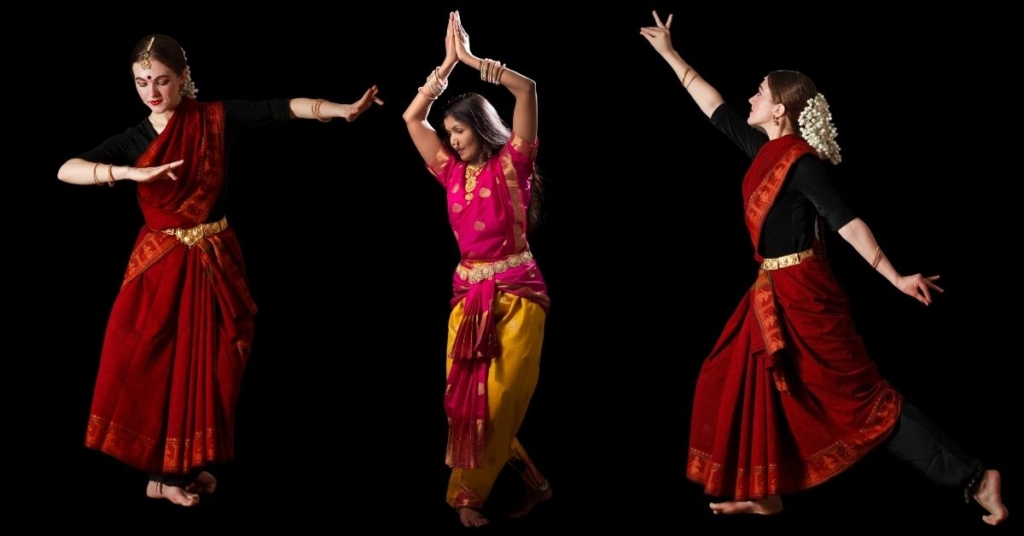India is a very traditional country, with thousands of years of history to fall back on. The various art forms like dance and music are an inseparable portion of our heritage. Our civilization is one of the oldest in this world. Moreover, it does not just embrace one religion or tradition but multiple forms. It is a treasure trove of arts, architecture, dance, music, and other natural forms—Indian Classical Dance occupies pride of place amongst these. You ought to know about the eight most popular dance forms.
8 Forms Of Famous Indian Classical Dance
Bharat Natyam
It is hailed as the oldest Indian classical dance form in India. It originates in the temples of Tamil Nadu. You will amaze to find that it is an amalgamation of dance, music, expressions, mudras, and myriad beats, and a combination of eye movements with all of the above, which gives life to the art form. You will come across the dance form at several places, including theatres and schools. Parents in South India initiate their children into this dance form from a very early age. So, you can expect to see numerous dancers from the southern part of India evolve to become prominent artists globally.
Kathak
It is one of the most elegant dance forms in India. Moreover, you will be amaze to know that it revolves around story-telling. It has come from the bards. You will find that footwork and various forms of expression are the primary basis of this dance form. It figures among the eight Indian Dance forms that have fared well all over the globe.
Additionally, the dance form, which originates in the UP, has evolve into various classes. They are Classical, Contemporary, and Sufi. The dance form consists of fluid movement, rotations, and footwork.
Kathakali:
It is another dance form originates in Kerala, which acclaim around the entire globe. It has a history of 300 years in Kerala. You will find it to be a grandeur with devotion, drama, makeup, costumes, and a musical soiree. This dance form is undoubtedly going to leave you spellbound.
Also Read: Devbhoomi Dwarka: India’s Submerged Ancient City
Kuchipudi:
It is the fourth Indian classical dance that has its origins in Andhra Pradesh. It got its name from Kuchipudi Village. You will be able to spot the dance being practiced with violin, flute and other musical instruments. Kuchipudi can be rightly called a dance drama. It finds its foundation in Natya Shastra.
Manipuri
The fifth among the top Indian classical dance forms is also referred to as Manipuri Raas Leela. The dance form soaked in the Madhura Raas between Radha and Krishna is characterized by gentle body movements and gentle eye movements. It is performed during Manipuri festivals and weddings and is based on the Hindu Shastras of Vaishnavism. You can call it the dance of divine love.
Odissi:
It originates in Orissa, as the name suggests. It has its foundation in lyricism, expressions, and sensuality. You can trace it back to the golden times as one of the oldest surviving dance forms. If you trace the temple stories of India, you will find the mention of Odissi in various scriptures. It can surpass the 6th and 9th century CE records too. You can find Odissi Dance in several Hindu dance texts like Abhinaya Darpana’ and ‘Abhinaya Chandrika’.
Mohiniattam:
Mohiniattam is another famous Indian classical dance form that originates in Kerala. It adheres to the ‘Lasya’ type of dance form. It derives its name from ‘Mohini’, who is supposedly the female avatar of Lord Vishnu. The females perform this dance solo. The languages Sanskrit and Malayalam give the dance form its voice. A vocalist or the dancer herself recites the verses while dancing.
Sattriya:
Sattriya is a renowned classical dance form in Assam(Northeast). You will come across various variations of this Assamese dance. Mati Akhara, Jhumura, Gopi Prabesh, Gosain Prabesh, Krishna Nritya, Nadubhangi, and Chali, to name a few. You will find its mention on copper plate inscriptions from the yesteryears. It is a show of communal devotion toward Lord Krishna.
Thus, you will find the heritage of India soaked in such cultural and Indian classical dance art forms. These give our country a distinct identity on the world map.



